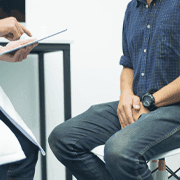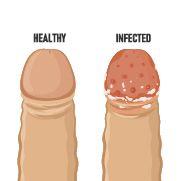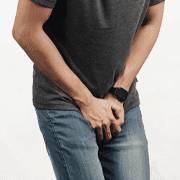How to Heal Circumcision Wound Faster - 6 Ways
In This Article
How to Heal Circumcision Wound Faster - 6 Ways
Sreemoyee
Updated on January 16, 2024
Medically verified by Dr. Arya
Fact checked by Dr. Pournami

Urology
5 min read
Is circumcision really necessary? And if so, how can you speed up the healing process?
Circumcision surgery is a safe and relatively painless procedure. But, it is equally important to take care of your wound properly after the procedure is done.
In this blog, Mykare Health will provide clear and concise instructions on how to care for a circumcision wound
After Circumcision: How Many Days to Heal the wound ?
After the circumcision procedure, the healing process will take about 7 to 10 days.
It may take several weeks for the wound to heal completely. You must follow the post-operative care instructions properly for a smooth recovery. You can expect some discomfort and swelling
Here are some possible pain points associated with a circumcision wound:
| Pain: | Bleeding: | Swelling: |
|---|---|---|
| You should have pain in the first few days after circumcision is done. The pain could be sharp,throbbing, or burning like. | The circumcision wound may bleed, especially in the first few days after surgery. The bleeding may be light or heavy. | The circumcision wound may swell, especially in the first few days after surgery. The swelling may be mild or severe. |
| Redness: | Tenderness: | Itching: |
|---|---|---|
| The circumcision wound may be red, especially in the first few days after surgery. The redness may be mild or severe. | The wound could be tender, especially in the first few days after surgery. The tenderness may be mild or severe. | The circumcision wound may itch, especially in the first few days after surgery. The itching may be mild or severe. |
| Infection: |
|---|
| The circumcision wound can become infected. This is a serious complication you will require thorough medical attention. |
If you experience any of these pain points, it is important to see your surgeon
Here is a general overview of what to expect after circumcision:
Immediately after the procedure:
-
Your doctor will apply a bandage to the penis to help control bleeding and protect the incision site.
-
A surgeon may give you the pain medication to help with discomfort. Also your surgeon will instruct you on post-operative care
The first few days:
-
Your surgical area may be sore, red, and swollen.
-
You might get a small amount of bleeding or oozing from the incision site.
-
Your penis may have a yellow or white color on the tip.
The next few days:
-
Your wound swelling should start to go down.
-
No bleeding or oozing will be appeared
-
Crust on the tip of your surgical area should fall off.
The next week or two:
- Your wound should be healed and back to normal.
Inform to your surgeon that if you notice any of the following:
If you feel that there is an increase of bleeding from the incision site, convey that to your surgeon.
If you have any fever over 100.4°F (38°C), immediately consult with your surgeon.
If you feel any redness, swelling, or tenderness around the incision site, you must report to your surgeon.
Do you see any pus or foul-smelling drainage from the incision site? Please bring it to your surgeon’s notice.
If you feel any difficulty while passing urine, inform your surgeon.
How to heal a circumcision wound faster?
Here are some post-operative care instructions to follow after undergoing your circumcision procedure
You should keep your surgical area clean and dry:
Wash the area with soap and water, and dry it with fresh cloth. Do not use harsh soaps or scrub the area.
You must be apply petroleum jelly or another ointment to the area:
After washing the surgical area ,apply a thin layer of prescribed ointment.
Change the dressing or Diaper as needed:
Your dressing should be changed at least once a day will help to prevent the surgical area from becoming irritated
Wear loose fit clothing :
You must avoid wearing tight-fitting underwear. It will slow down the healing process
Do not take bath :
Do not take baths or swim until the wound has healed.
You need to watch for signs of infection:
If you notice any of the signs of infection including redness, swelling, pain, pus, and fever, immediately consult your surgeon
 6 min read
6 min readWhat is Stapler Circumcision - Everything You Need to Know
 8 min read
8 min readIs Circumcision Good or Bad - Here's How to Find Out
 8 min read
8 min readCircumcision - Scientific Guide to All Your Questions
Get a Callback Now
How to clean a circumcision wound:
-
Wash your hands properly with soap and water.
-
Gather your supplies: warm water, mild soap, a clean washcloth or cotton balls, petroleum jelly (optional), and gauze pads (optional).
-
Gently retract the foreskin (the loose skin covering the head of the penis) to expose the incision site.
-
Rinse the incision site with warm water to remove any dirt or debris.
-
Gently wash the incision site with mild soap and water, avoiding scrubbing.
-
Rinse the incision site thoroughly with warm water to remove all soap residue.
-
Pat the incision site dry with a clean washcloth or cotton balls.
-
Apply a thin layer of petroleum jelly to the incision site (optional).
-
If using gauze pads, place a small gauze pad over the incision site and secure it with a loose bandage.
-
Repeat steps 2-9 once a day until the incision site is healed.
How to prevent scarring after the circumcision procedures?
-
You must avoid tight-fitting clothing, such as diapers or underwear, which can irritate your surgical area.
-
Keep your surgical area clean and dry. Wash the area gently with warm water and mild soap, and pat it dry with a clean towel.
-
Often change bandages, especially after bowel movements.
-
You have to apply petroleum jelly to the area to prevent irritation.
-
You must avoid sexual activity until the area has completely healed.
Read More About Cost of circumcision surgery
Circumcision Healing Time: The circumcision wound typically takes 7 to 10 days to heal, with complete healing extending over several weeks.
Possible Pain Points: Pain, bleeding, swelling, redness, tenderness, itching, and the risk of infection are common concerns after circumcision.
Initial bandaging to control bleeding and protect the incision site.
Prescription of pain medication for discomfort.
Instructions from the surgeon regarding post-operative care.
Soreness, redness, and swelling in the surgical area.
Possible bleeding or oozing.
Yellow or white color on the tip of the penis.
Reduction in wound swelling.
No bleeding or oozing.
Crust on the tip of the surgical area falling off.
Complete healing of the wound is expected.
Monitoring for any signs of concern.
Signs to Report to Surgeon: Increased bleeding, fever over 100.4°F (38°C), redness, swelling, tenderness, pus, foul-smelling drainage, or difficulty urinating.
Keep the surgical area clean and dry, using gentle soap and water.
Application of prescribed ointment after washing.
Regular changing of dressing or diaper to prevent irritation.
Wearing loose-fitting clothing to aid healing.
Avoiding baths or swimming until the wound has healed.
Wash hands thoroughly.
Gather supplies: warm water, mild soap, clean washcloth or cotton balls, petroleum jelly (optional), and gauze pads (optional).
Gently retract the foreskin to expose the incision site.
Rinse with warm water, wash with mild soap, and pat dry.
Optional use of petroleum jelly and gauze pads.
Repeat daily until the wound is healed.
Avoid tight-fitting clothing to prevent irritation.
Keep the area clean and dry, washing gently with warm water and mild soap.
Regularly change bandages, especially after bowel movements.
Application of petroleum jelly to prevent irritation.
Avoiding sexual activity until complete healing.



